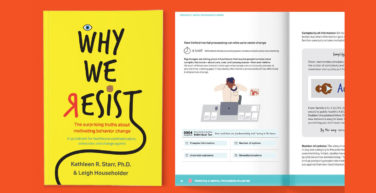We’re in the golden era of brand planning. With every tap on a screen to comment on a message board, the digital age provides an endless data supply that tracks back to individual behavior. Never before have strategists had access to such insightful information. The revolution is not without challenges, though. While first-person inputs—both qualitative and quantitative—are still relevant, they need to be bolstered by insights derived from passive user-behavior metrics, delving into the deepest parts of the dark web. Or at least from Twitter’s public API.
Not all traditional brand planning tools were built to sustain this modernization.
A casualty of this sea change is the target persona. A truly modern persona should account for the constant ebb and flow of the target, combining all of the inputs, with a touch of intuition sprinkled in. In short: Personas should be as 3D as the targets they’re personifying.
More often than not, however, traditional persona iterations feel flat and oddly nonspecific. They often rely on alliteration and not-very-detailed details (e.g., Patti Patient likes to watch TV) as opposed to being a useful intersection of channel, expectations, messaging, and mind shifts. They are binary tools in a decidedly nonbinary world.
How do we account for modern fluidity while still delivering an instinctual, pointed persona? Or, simply, how do we make personas better?
Context Matters
The aforementioned influx of digital media into every aspect of life now means that targets often exist as different, yet simultaneous versions of themselves. Online vs. in person. Professional vs. personal. Serious vs. silly. The caveat? These selves no longer have clear lines of separation, becoming a blurred mess of humanity with overlapping alter egos and multiple personalities. Nevertheless, a truly 3D persona must account for each self.
Finessing this much information into a manageable persona may seem daunting. Frankly, it is. Still, the strategist’s job is to discover the crucial stuff, interpret what it means, and extrapolate digestible insights. But how do we derive singular insights when everything matters?
A smart application of social listening may help. Social media platforms are designed deliberately to emphasize different versions of the self. So, tracking the evolving engagement and language that targets use from one channel to the next will elucidate not only the distinctions within their selves, but also the instances of homogenous thinking—true internal consensus.
Time is of the Essence
If context is the first layer of a 3D persona, then timing is the next layer to apply. This is not as simple as knowing whether the target is a morning person or a night owl (though, to be fair, there are probably some insights baked into that, too). Rather, it’s about chronicling how the target’s decision-making fluctuates throughout the day/year/life, and how messaging can be the most impactful at each moment.
Tapping into the search habits of your targets also yields contextual insights. SEM retargeting data provides details on what combination of words (and the follow-through links they find most clickable) your targets are searching for when they’re at various places and at various times. Aligning the types of queries your targets are searching for with location and time of day will help to deduce preferences for specific types of content.
We consistently consider the “right time” for the “right message” when building personas for our healthcare-focused targets. One observable trend is that there are ideal times to reach physicians with treatment-focused content, and there are other times when physicians are more receptive to deeper, thought-provoking content. These time-based insights not only drive our content creation and media plans, but they also help us guide the field reps on when and how to communicate with the physicians in their regions.
It’s crucial to frame discussion guides so that the conversation veers away from marketing-specific vernacular (e.g., what is your favorite channel to learn about new products?) and moves toward human-centric, broad statements where the audience can unpack their experience (e.g., tell me about the most interesting thing you’ve seen at a conference booth this year).
Focus on Channel Value with HCPs
In the healthcare space, it’s common for physicians to claim social media barely impacts their treatment decision-making. Consequently, it may be challenging to get physicians to validate those channels as meaningful, let alone entice them to discuss social media in detail. However, if you restructure the conversation to focus more generally on the value of a specific channel, like Reddit, you’ll discover they’re likely to have lots of thoughts on when and why to engage there.
Insider baseball: Pathologists use Reddit in the morning or after-hours, specifically to engage with threads where their peers philosophize on out-of-the-box techniques. Want to get more specific? Oncologists are more likely to interact with content at mid-morning on Sundays, while orthopedists are more likely to interact with content early Thursday morning. Rheumatologists also prefer Thursdays!
With the amount of media people consume daily, the middle section of the marketing funnel has become infinite—we’re all swimming in consideration. Yet consideration is not a marketing monolith. There are striations within that, if observed and articulated in a persona, can provide the exact types of insights to make a campaign feel personalized and value-driven. This approach has built up the programmatic media offering in which paid media units that are meaningful to the target are served up on contextually irrelevant sites. Why do they work? Because that particular moment is the right time to reach the target, even if the “where” intuitively seems wrong.
However, “where” and “when” aren’t the only dimensions to consider; there is also the “who.” And the “who” doesn’t necessarily mean the target.
Under the Influence
The third and last layer to apply to a modern persona is more about the space around your target than the target specifically. Everyone has a sphere of influence—the key people, institutions, or brands that directly and persistently communicate with us—that drastically shape our perception of the world. These influencers inadvertently apply peer pressure that sways the way a target thinks, and ultimately, behaves. It’s crucial to understand what the persona’s sphere comprises, and which influencer messages are most likely to move their internal needle in behalf of the strategy (or propose an unexpected barrier).
In the healthcare space, we’ve seen more conservative physicians adopt unconventional methods because they have transitioned to a hospital where their peers are more apt to consider more progressive medicine. These behavior changes aren’t being driven by brilliant marketing strategies; they are the consequence of atmosphere bias, of reformation via association. Patient self-advocacy persists as a strategy because patients remain influential on the decision-making for their own health.
Identifying what exactly these key messages are may feel like extra legwork, but the juice is well worth the squeeze. Moreover, even the most privacy-protected industries still have methods for better understanding the conversations occurring amongst influencers and targets. Doximity—a social platform exclusively for doctors—has monetized an HCP Connection section that allows marketers to identify key opinion leaders via their specialties, which then provides insights on the persuasive messages being disseminated to physicians within niche communities.
Create Mini-personas
A simple way to incorporate these key influencers into a persona is to create mini-personas, or high-level personas of a target’s influences and how they might be influencing the target directly. At our agency, we may build out a persona for an oncologist, and then incorporate the top things they’re hearing from industry publications, key opinion leaders, peers at their clinic, their pathologist, their nursing team, and their patients.
While adding context, timing, and influencers into the persona gumbo may seem daunting, you’ll find that these adjustments will unleash a department-agnostic tool that inspires each and every step of brand strategy. The right persona should encourage the media team to analyze their plan, the digital and web team to go deep into their UX process, and should help the creative and content teams to understand exactly what great work looks like. The right persona should leap off the page…and require no special glasses to do so.








